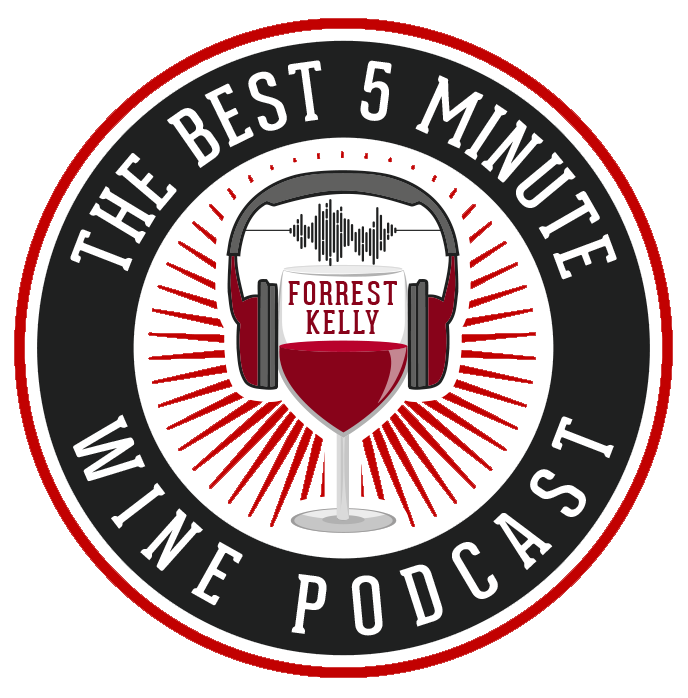Episode 60
Michael Juergens - Kingdom of Bhutan Pt. 3
Welcome to The Best Five Minute Wine Podcast, I'm your host, Forrest Kelly, from the seed to the glass wine has a past. Our aim at The Best Five Minute Wine Podcast is to look for adventure at wineries around the globe. After all, grape minds think alike. Let's start the adventure. We're speaking with a man responsible for bringing vineyards to the country of Bhutan, the Kingdom of Bhutan. How big a country is it? It's actually not that big a country. It's about the size of Switzerland. So it's probably, I don't know, 300 miles North to South and 500 miles East to est. Anywhere that you are you can sort of look in every direction and see mountains. But like Everest is behind those. And so you can't necessarily see Everest from most places. There's just one cool pass of Dochula Pass. It's about 14,0000 thousand feet. It's between the capital city of Thimphu, where we have a couple of vineyards, and the Valley, where we have a couple of vineyards. And so I drive over that pass quite a bit. And when you're at the top, there's this outlook that you can see like 17 different Himalayan peaks that are all in the low twenties and it's really freaking cool. And when you're flying into Paro, you can see average when you fly in, which is kind of neat too. So tell me about some of the advantages of the country. I mean, the obvious one is just the water that is coming off of the glaciers and the snow runoff of the Himalayas. I imagine there are others as well. So the soil is super, super vibrant. And so, you know, if you sort of believe in some of this, you know, biodynamic philosophy where you sort of getting this balance with the local ecosystems and the biomes and the soil and the local wildlife, that's certainly part of it. They're on track to be the first 100 percent organic country, so they're really sort of against interventionist agriculture. It's more about trying to find how things will work in those climates. The water is entirely microplastic-free because it's just pure runoff from the Himalayan glaciers. So you have this really good water and the climate. There's a lot of different microclimates there that sort of stretch from jungle at the bottom of the country, at the south side, all the way up to glacier. So you have all these different climate zones within the country that they are they figured out over the years like, Oh hey, you know, Mandarin oranges grow really, really well down here, where red rice grows really, really well at 7,500 feet. And my hope is that that's what we're going to find with our grapes is that Merlot grows really, really well at 3000 feet and Riesling grows really, really well at 7,500 feet. So my guess is that that's where it will evolve over time, as it's done with some of their other crops. But that's, you know, that's a 50-year plan, not a 5-year plan, unfortunately. With a business plan like that, you've done your homework and it sounds very encouraging down the line. Can you tell me a little bit about the potential markets? One of the leading roses in India right now is Mateus. I don't know if you're familiar with Mateus, it's a Portuguese rosé, which sells for about $5.00 bucks a bottle here in the U.S., and in India, it sells for $29.00 a bottle. There's a pretty significant margin opportunity if you can capture that market share without paying, those import taxes and tariffs. So there's it's one thing to go after a unique area like Bhutan and say, Hey, I want to grow a Bhutanese cabernet here, and I want to try to capture the essence of Bhutan, and we're going to export this to London, and we're going to sell for $250.00 bucks a bottle. That is very, very cool and interesting to kind of the wine geeks of the world. But there's another piece to our business model that is super interesting, which is India has a billion-plus people and a burgeoning middle class, and they are becoming much more interested in wine. And every other country that's exporting wine to India is paying a pretty big tax and a pretty big tariff in order to sell there. Bhutan has a free trade agreement with India. Kind of like what we do with Canada NAFTA. And so I can sell wine to India and avoid those extra costs. So our model is going to be a really bifurcated model where we're going to make these high-end terroir-specific wines that we send to New York and London. But I'm also planning on making a more approachable mid-market type of wine that we're going to sell in quantity down to India. You know, we have the opportunity to alter, you know, the way the wine is consumed in India, as well as the way Bhutan farms. And it's a pretty broad social experiment in addition to just being a cool wine thing. Thank you for listening. I'm Forrest Kelly. This episode of The Best Five Minute Wine Podcast was produced by IHYSM. If you like the show, please tell your friends and pets and subscribe. Until next time pour the wine and ponder your next adventure.
This podcast uses the following third-party services for analysis:
Chartable - https://chartable.com/privacy
Podcorn - https://podcorn.com/privacy
Support The Best 5 Minute Wine Podcast: https://www.patreon.com/thebestwinepodcast
See omnystudio.com/listener for privacy information.


